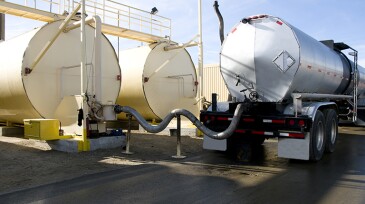Safety
This study ascertains the capital expenditure and operating expenditure associated with the reuse of existing facilities, specifically regarding a carbon capture and storage project being prepared in South Korea.
Sponsored
Advance your career with the new Pipeline Engineering Program at the Technical University of Leoben, a 5-month course combining on-campus and online learning, integrating industry expertise, engineering practice, and future-ready skills for professionals in oil, gas, and emerging energy systems.
A resilience-based approach to safety was the focus of a panel of experts at the 2025 SPE Annual Technical Conference and Exhibition in Houston.
-
The Trinity Spirit, capable of storing up to 2 million bbl, sank off the Nigerian coast on 3 February.
-
One of the main reasons software implementations fail is because the scale of the project was too much from the outset.
-
In-situ extraction of heavily sulfured oil by use of steam injection comes with a high risk of hydrogen-sulfide production resulting from aquathermolysis reactions. This could lead to casualties, environment damage, and corrosion of surface facilities and wells. Also, a strong need exists to understand aquathermolysis reactions and to forecast the generation of acid g…
-
The number of fatalities reported to the International Association of Oil and Gas Producers was down by half from the total in 2019.
-
People and businesses alike are adapting processes and products to help ensure the activities we undertake and products we produce are sustainable for the future. Industrial lighting is no exception.
-
After an oilfield tank battery explosion killed a 14-year-old girl, Louisiana regulators have put new rules in place for the storage tanks and are launching a campaign to identify all of them statewide.
-
For the fourth consecutive year, driver shortage remains the trucking industry’s leading concern. Oil and gas and energy industries face major challenges in the retention and recruitment of drivers for their transportation fleets, especially for petroleum and liquid tankers.
-
Three workers have been killed during the decommissioning of an aging floating storage and offloading vessel off the coast of Libya, according to operator Mellitah Oil and Gas.
-
A new survey has revealed a lack of training and awareness around head injuries and their possible causes. Head injury expert Chris Tidy explains why the construction industry needs to understand the risks.
-
SponsoredShell needed an easy-to-use, simple well monitoring solution. Could an IoT wireless solution measure up to a classic wired approach?













